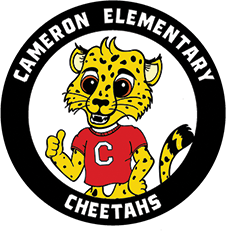School History: 1980-2010
In 1978, Douglas Dalton left Cameron to become principal of Rose Hill Elementary School. He was succeeded by David L. Lunter, who served as principal for two years until being appointed principal of Mount Eagle Elementary School.

Principal George Towery
In 1980, Principal Lunter was succeeded by George F. Towery. Prior to his appointment to Cameron, Mr. Towery was the principal of Lorton Elementary School for ten years. The three pictures below provide glimpses of Mr. Towery during various phases of his 40-year career as a principal in Fairfax County Public Schools (FCPS).
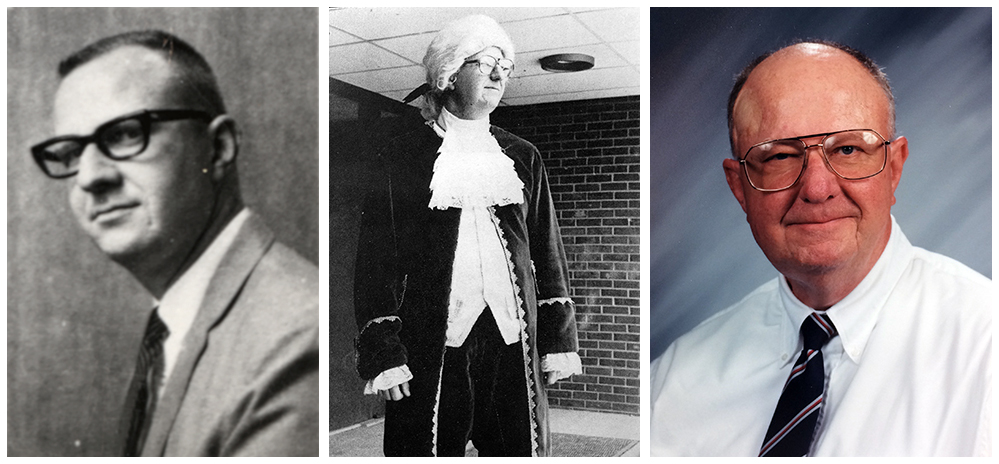
Principal Towery led Cameron for 30 years (1980-2010), and was one of the longest-serving principals in the history of FCPS. During his time as principal, Cameron underwent significant changes in student demographics and enrollment. Mr. Towery described these changes in his book Touched By A Child, A Principal’s Story. In this book, Mr. Towery painted a picture of Cameron at the time of his arrival in 1980:
Cameron was one of the several schools in the system that one would consider urban. Most of our students came from small duplex housing and tiny single family homes that had been built in the late 1940s and early 1950s. Several large apartment complexes were also in our attendance area. We were close enough to the City that the new Washington area Metro transit system was about to open in the center of the community. Our student population [was] about 400 students with approximately half of the students African-American and half Caucasian… We were beginning to create a racially diverse staff which I considered essential in a school like Cameron.
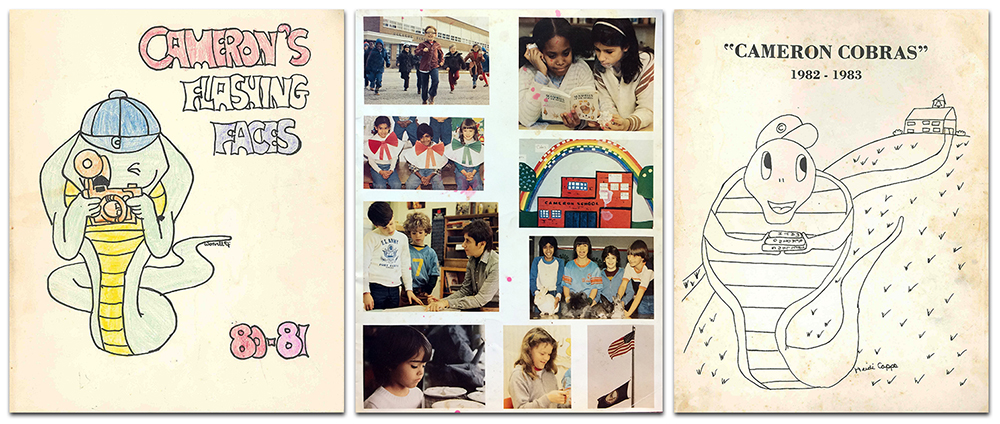
The Quality of the Future Starts Here
As a child, Principal Towery was told repeatedly by his father, “Get your education. It is the one thing that no one can ever take from you.” Mr. Towery memorized those words, but he stated later that he never fully understood them before coming to Cameron.
As I looked at our community, I realized… what truly needed to be done in and for the children of Cameron School. Thus, we adopted the motto,” The Quality of the Future Starts Here” not just as nice words, but as an understood reality that we, the staff, were responsible for ensuring a positive future for the children of our community.
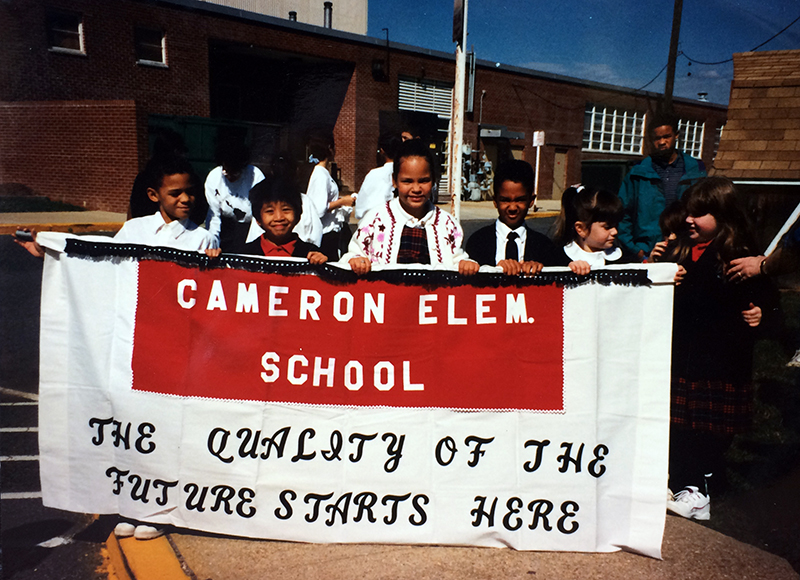
The Rabbit Club
In the mid-1970s, the Commonwealth of Virginia required each school to develop a program for gifted or advanced students. FCPS administrators encouraged principals to “think outside the box.” Because the Lorton community was still very rural at the time, Principal Towery and staff members decided their gifted program would focus on raising animals to give students a different learning experience and to help develop some responsibility. Mr. Towery convinced FCPS this was a reasonable project, and he was allowed to convert and outdoor storage building on the side of the playground into a goat barn. The program became known as the Goat Club, and participating students learned how to milk dairy goats, make goat cheese, and care for the animals. Mr. Towery later stated that the Goat Club taught him that children have a natural love for animals, and that hands-on learning teaches valuable lessons and makes great memories in the process. When the time came for Mr. Towery to transition to Cameron Elementary School, he wanted to provide a similar experience for Cameron students.

The Cameron community was vastly different from that of Lorton. Folks lived close together. Many students live in high rise apartment buildings. Families rented residences and were not allowed pets. Thanks to the 4-H, we began to learn about rabbits. With the help of some fathers we built some sturdy cages and purchased several rabbits… A neighbor of the school called after Easter and offered us a duckling. We were hooked, went out and purchased a kiddie pool and watched as the duck grew and had the run of the courtyard. One of the classes decided that they would like to hatch some baby chicks. The hatching was successful and some of the chicks remained, grew, and lived in the courtyard.
~ George Towery
In November 1992, construction began on a $3.7 million renewal of Cameron Elementary School. Prior to the renovation, several teachers met with the project’s architect and designed new courtyard enclosures for the animals. The courtyard was also divided into two sections, a place for the animals, and a place for the students to watch and enjoy them. After the renovation, goats were added to the little barnyard.
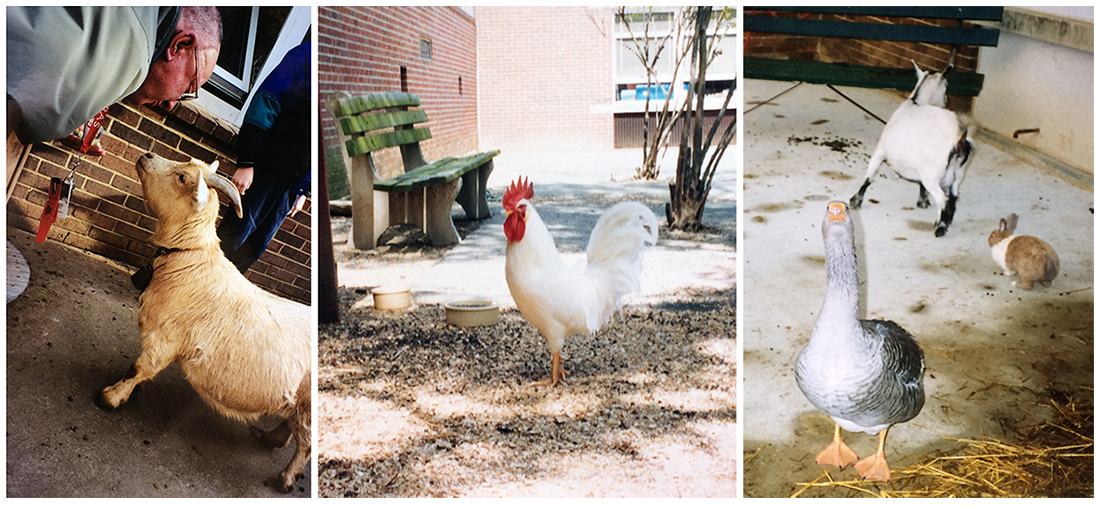
The courtyard was not just fun; it developed responsibility in those caring for the animals. As explained to the students each fall, the animals could not feed and water themselves. They were completely dependent upon the kids to take care of them every day. We were often teased and called “The Animal School” which was not offensive to us. The animals created some wonderful and lasting memories for all of us.
~ George Towery

A Little United Nations
The opening of the Huntington Metro station in 1983 initiated a profound change in the student demographics at Cameron. The departure of baby boom-era families from area neighborhoods, and the construction of affordable housing close to the Metro station, brought an influx of immigrant and refugee families into the community. Realizing that school staff serve as a constant role model for the community, Principal Towery sought to make Cameron’s staff as diverse as the students. Because the predominant minority group was Hispanic, Maria Mermagen was brought on staff as Cameron’s first Hispanic community liaison. By 1993, Cameron Elementary had six English for Speakers of Other Languages (ESOL) teachers on staff.
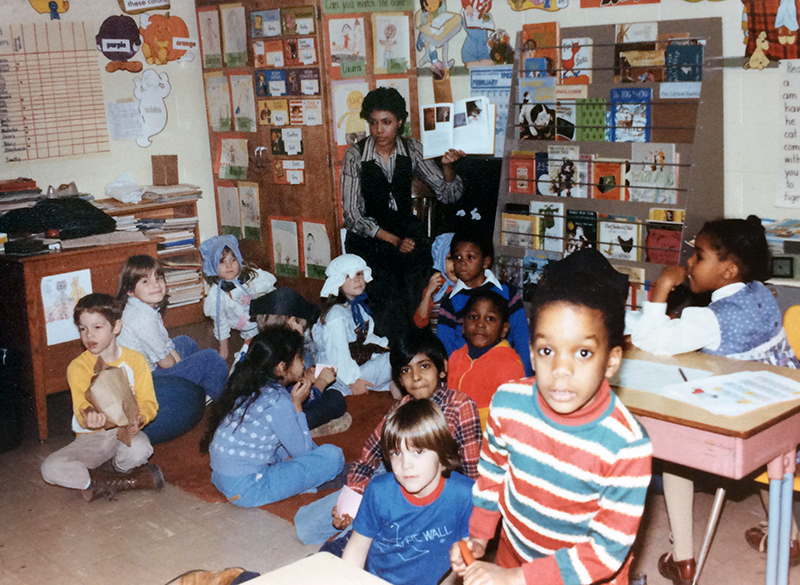
From 1983 to 2000, Cameron Elementary School’s student population transformed from one that was half African-American and half white, to one where 70 percent of the children came from families who had a native language other than English.
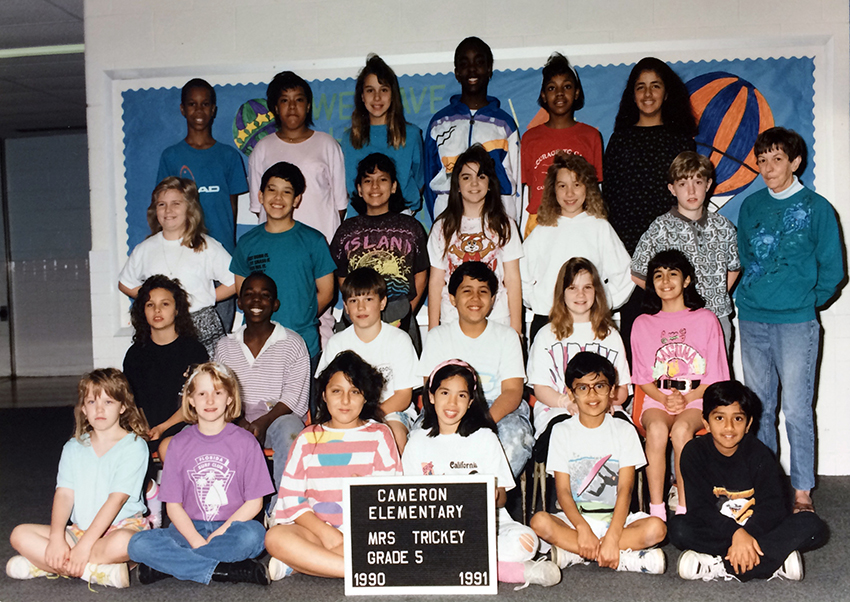
George Towery gets a glimpse of 27 countries each day he walks into Cameron Elementary School. Of the 450 youngsters who make up this school, 30 percent are black, 25 percent are Hispanic, and 15 percent Asian. Most of the rest are registered as while, although they or their parents emigrated from a variety of countries like Afghanistan, Poland, or the Soviet Union. 27 countries are represented at the school, which has been designated by FCPS as a special needs school. “It’s like a little global village,” says Towery. “I think kids who go to school here have a real picture on the world the way it really is. In my own opinion, they are far, far richer because of it.”
~ The Free Lance-Star, July 29, 1991
By the early 2000s, students at Cameron came from all corners of the globe, represented all continents, and had family backgrounds that ranged from the nieces of tribal chiefs in Sierra Leone seeking to escape the fighting in that country, to those that had never lived in a modern society. The children of Cameron were truly global citizens.
I think you have to make these kids understand that they are appreciated and they have a contribution to make in spite of the fact that it may not be written in English, or spoken English. You have to recognize their strengths, which they all have. Through my interaction with our immigrant children I realized every day that, to the outside world, America was a far greater nation than most of us that were raised here recognize.
~ George Towery
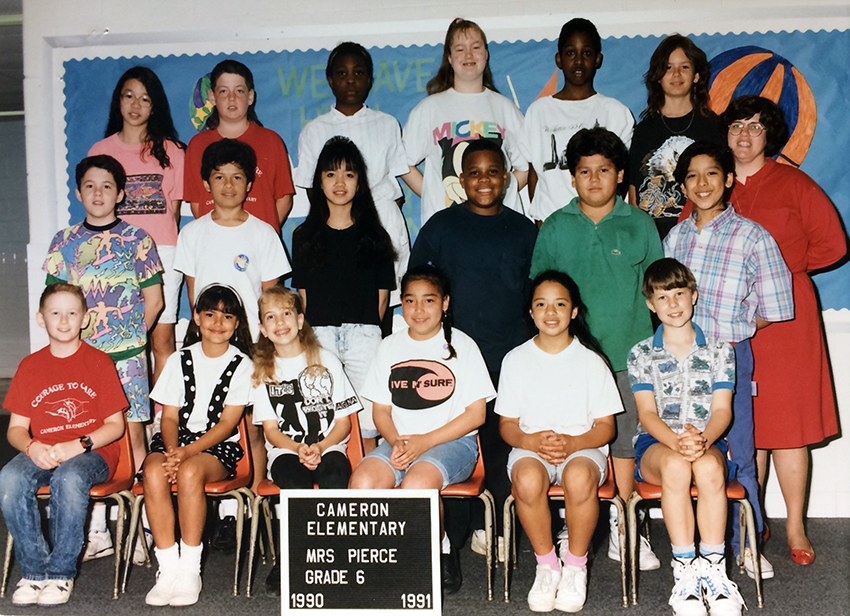

Cameron School
This description of Cameron Elementary School was written by school staff in the mid-1990s: “New students are arriving at Cameron daily (as many as 30 in a week). Approximately two-thirds of our school population receives free lunch and therefore are considered low income. Youngsters seldom make fun of another’s dress or try to attain status other than through academic success. Many youngsters, realizing that their own parents can neither read nor write, see themselves as pioneers, out to serve their family, establish a tradition and prove that the USA is still the land of opportunity where even they can be somebody.”
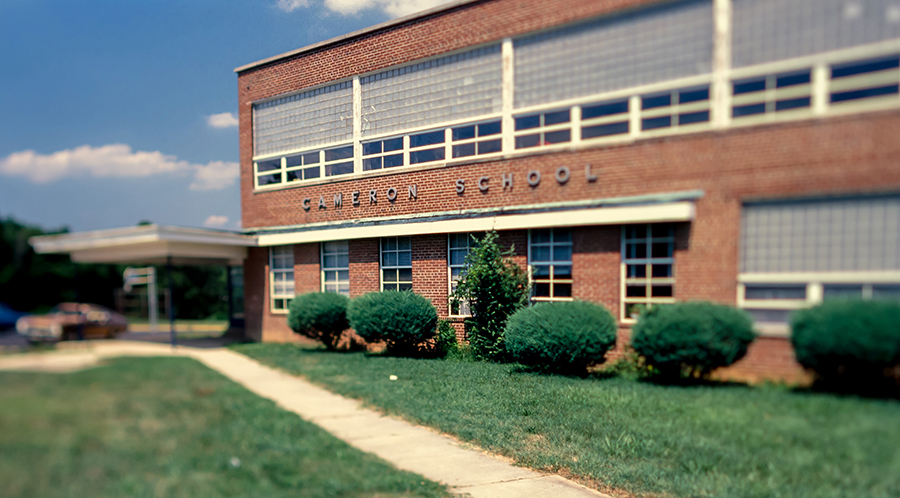
“Cameron is unique, a microcosm of our global society where all children are just children deserving the best that this staff can provide. Each wants to be loved and respected and finds that here. Cameron School is a safe haven where all fit and belong, there are none out of place. We at Cameron consider our diverse student population our single greatest strength. Each child comes with stories about his or her family, customs, and background to share and to tell. We learn from each other. We have a better understanding of the world, its expanse, its differences and similarities, its geography, and above all, its people.”
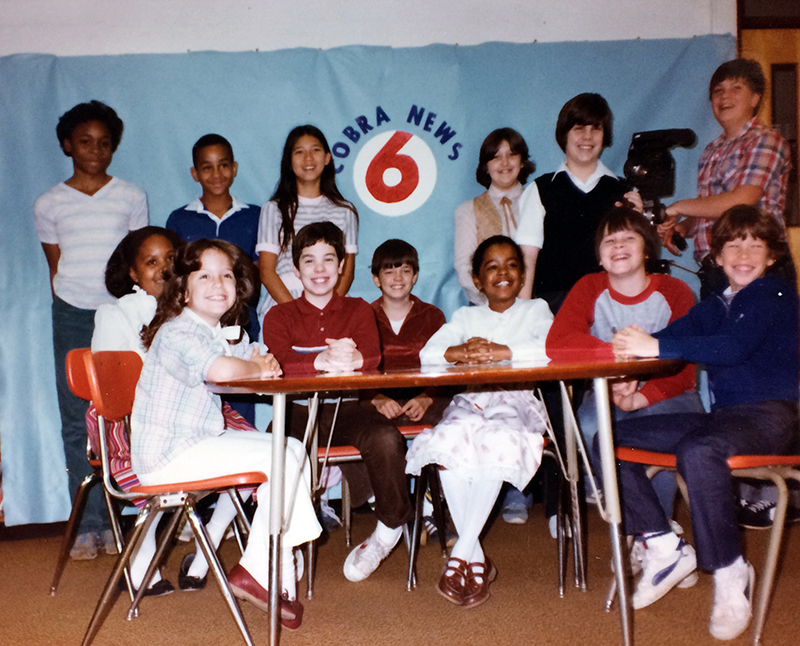
An "ABC" School (Always Building Character)
In 1995, Cameron Elementary School became the first public school in the county to adopt school uniforms. The uniforms were an outgrowth of the Alternative Education Program at Cameron. At the direction of teacher Lilly Vincent, students in this program wore white shirts and ties to school, and teachers, school staff, and community members took notice that the uniforms were having a positive impact on these students’ academic progress as well as their self-esteem and behavior. Principal Towery suggested that the program be broadened to include the general education students, and the Parent-Teacher Association (PTA) and faculty endorsed the idea. Thus, uniforms were introduced during the 1995-96 school year.

At Cameron, uniforms were made up of red or white polo shirts or white blouses and navy blue pants, skirts, or shorts. The most obvious element of the uniform was the red “Character Counts at Cameron” t-shirt which each student received without charge every school year. Many students dressed in their Character Counts shirts every day, accumulated through the years and passed them on to younger siblings. Cameron’s staff spoke regularly with students about their learning attire, comparing it to sports uniforms that were worn to their various soccer and football games.

Students, especially younger ones, generally give uniforms a thumbs-up. Sixth-grader Donnell Nesbitt said his behavior has improved since Cameron Elementary this year became the first public school in Fairfax to try uniforms. "When you dress well, sometimes you act well," said Donnell, who washes and irons his only long-sleeve white shirt each night. Cameron Elementary this year became the first Fairfax County school to try uniforms, although students are not required to wear them.
~ The Washington Post, March 1, 1996
In November 1996, the Washington Post reported that more than 400 of the 525 students at Cameron were wearing the optional uniform. “Gail Allison, a counselor at Cameron, said the uniforms reduce pressure on the children to compete through their wardrobes. That's especially helpful for low-income families, she said.”
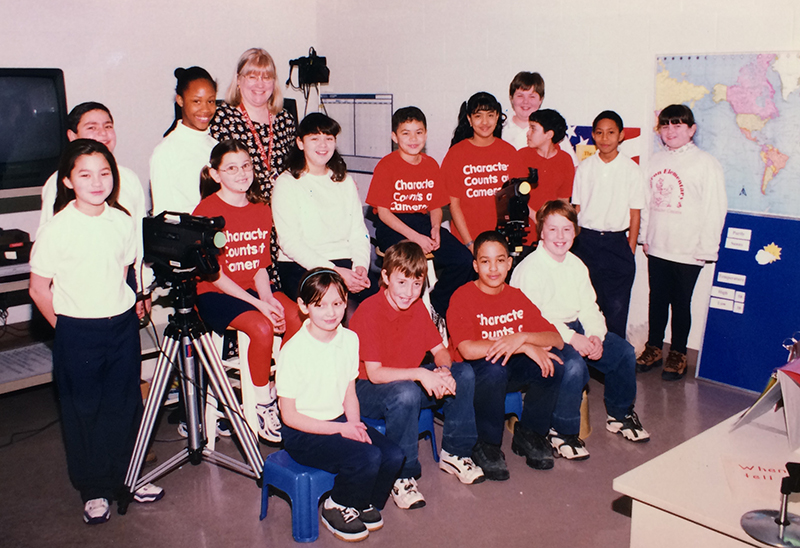
Seeing the World
Cameron alumni from the 1980s and 1990s fondly recall the annual field trips offered to students during this era. First through sixth graders went on an overnight camping trip to a 4-H center in Front Royal, Virginia, where they learned about wildlife and stayed in cabins. Fourth graders took field trips to the State Fair in Richmond, and to Jamestown and Williamsburg. At the end of the school year, sixth graders travelled to New York City and visited the United Nations, Ellis Island, and the World Trade Center.
“What I remember most was our trip to New York. I had never been anywhere and was so excited to go to the World Trade Center and the Statue of Liberty. It was something I will always remember.”
~ Michael Preston, Cameron Alumni, early 1980s.
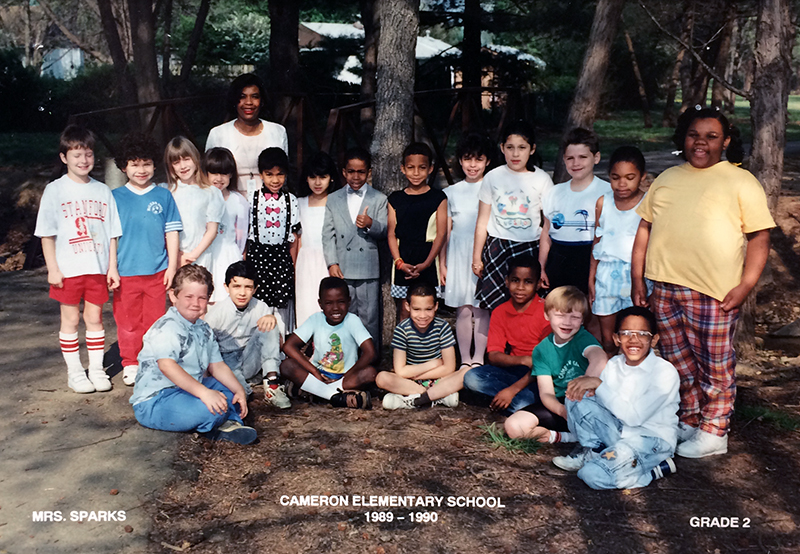
Technology Evolution
In the 1970s, FCPS elementary school offices received their first electric typewriters—the IBM Selectric. In the 1980s, school offices were outfitted with an IBM personal computer to record attendance and maintain student and staff information. By the early 2000s, all school reports, plans, and report cards were being done with computers. During the 1980s and 1990s, computers slowly made their way into FCPS classrooms as well. In 1990, Cameron’s first computer lab was started in a classroom outfitted with 28 state-of-the-art computers. The computes were “linked to a national network” perhaps making Cameron the first elementary school in the county to be connected to the nascent internet. By 1997, students in grades 3-6 spent half an hour every day at computer stations outfitted with SuccessMaker software, practicing math, vocabulary, and other skills. In 1996, the first full year that fourth graders used the new system, test scores on fourth grade reading and math tests rose significantly.
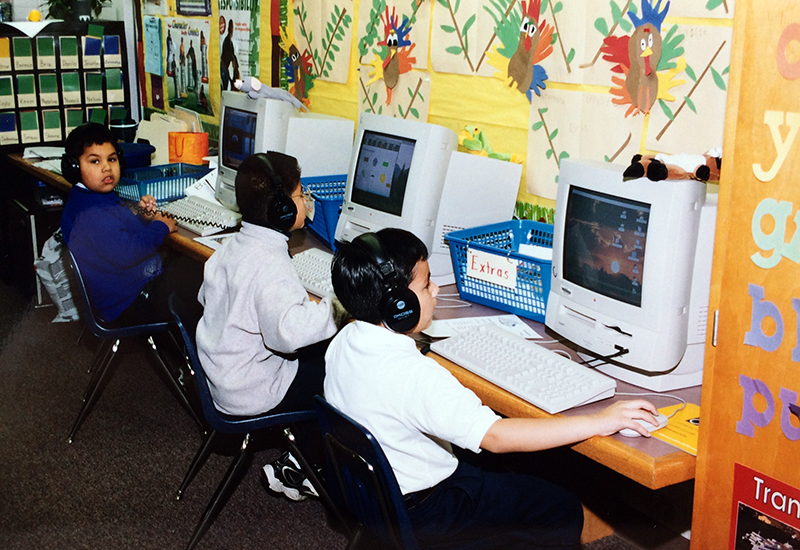
The First Ladies
Did you know that Cameron has been visited by two First Ladies of the United States? The first visit took place in the early 1980s. Barbara Bush, a future first lady at the time, visited Cameron and donated books as part of the Reading is Fundamental (RIF) program.
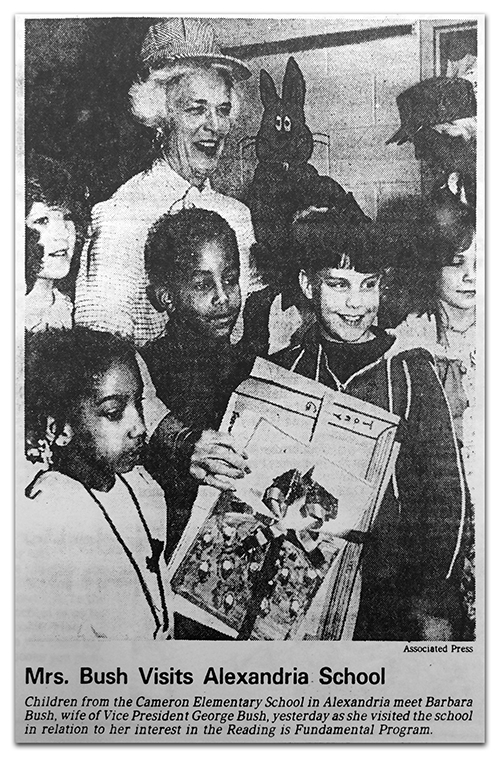
Mrs. Bush, wife of then Vice President George Bush, was invited to Cameron by students. She arrived in a black limousine, and was flanked by two secret service agents. Mrs. Bush addressed the cheering students, saying “This is my first RIF book distribution as a new board member to the program, and I can’t think of a better school to go to. You have given me such a warm welcome. Now it’s time to pick your books.”
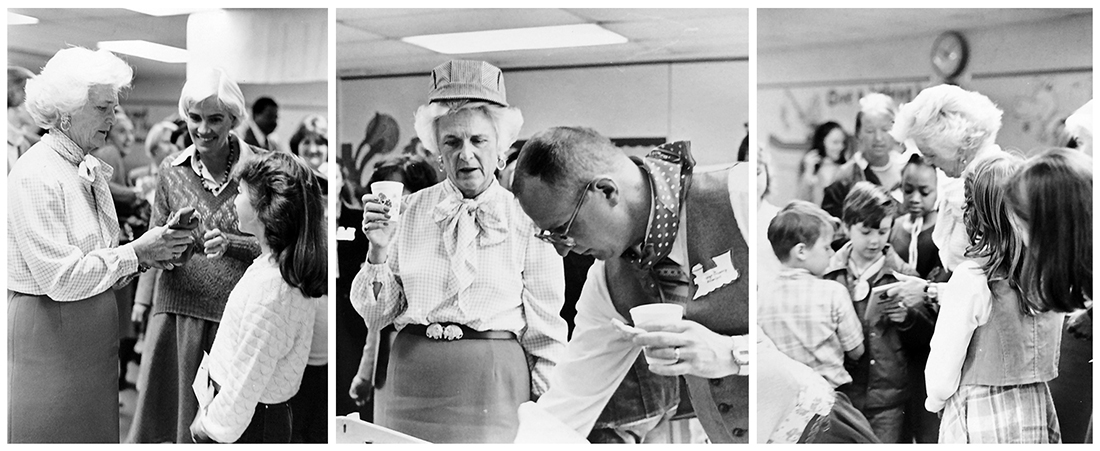
The second visit to Cameron by a first lady of the United States took place in February 1987, when First Lady Nancy Reagan came to promote the “Just Say No” substance abuse prevention campaign.
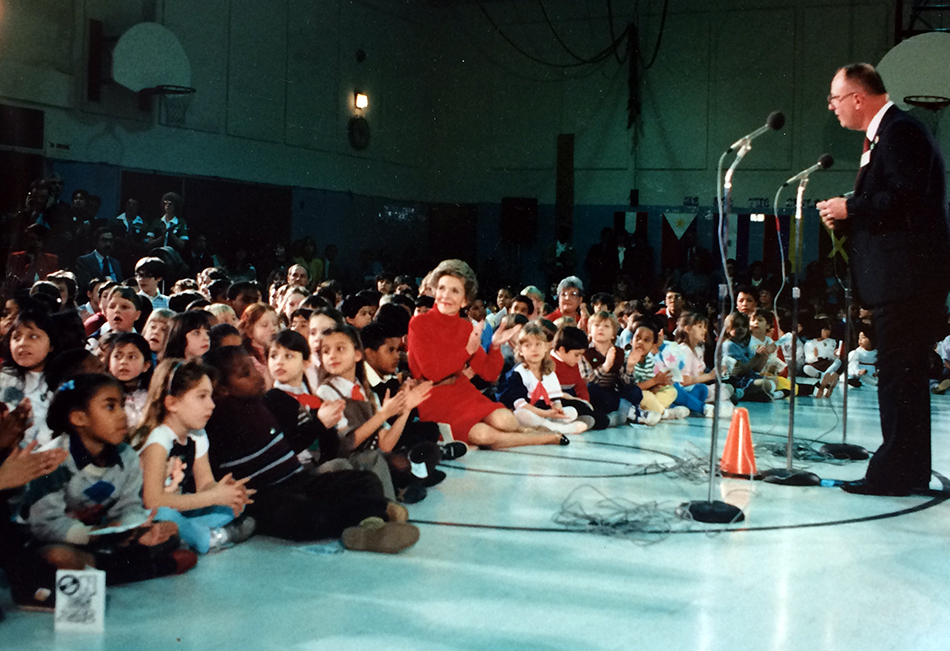

A Glimpse Back in Time
In March 1994, Cameron Elementary School was the subject of the Fairfax County Public Schools cable television channel series Profile. The Red Apple 21 crew spent several days at Cameron, gathering interviews with teachers and classroom footage. The resulting 30-minute documentary provides a fascinating snapshot of Cameron in the mid-1990s.

